
Visit White Sands National Park, A Perfect Park for Your Southwest Road Trip
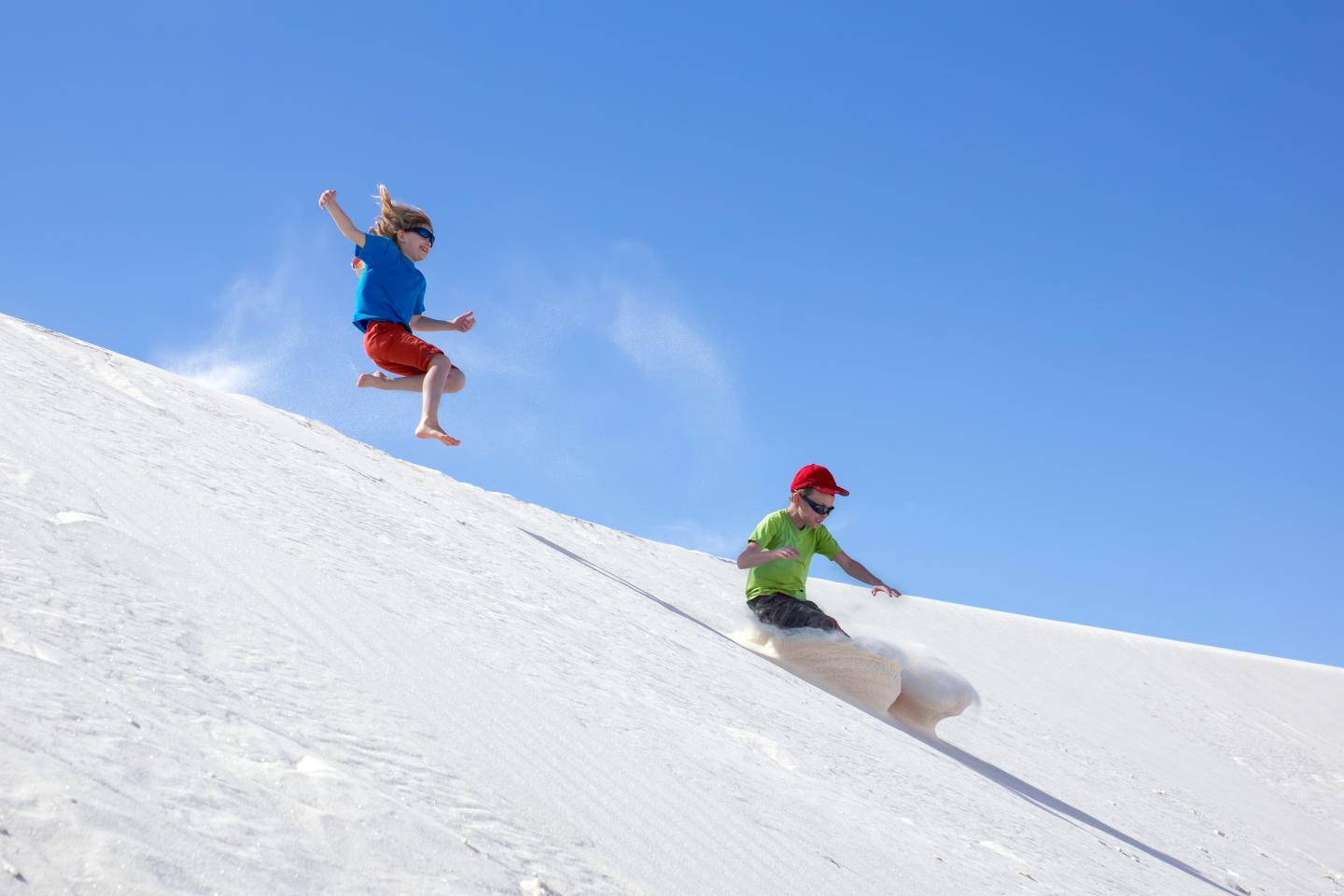
Indigenous peoples have traveled through and stewarded the area now known as White Sands National Park since at least 21 thousand years ago, when they left footprints that later fossilized. The park is on the ancestral land of the Mescalero Apache, who continue to maintain their cultural ties to the land.
The first time my feet walked on the gypsum dunes of White Sands National Park was when I was moving from New York City to Tucson five summers ago. I spent the last night of a cross-country trip in Las Cruces, New Mexico, four hours east of my final destination. Restless to get to my new home, I knew I would be too excited to sleep in. Instead, I searched for things to do in the area and realized I was less than an hour away from the world’s largest field of gypsum dunes at White Sands National Park. And what a perfect morning detour it was!
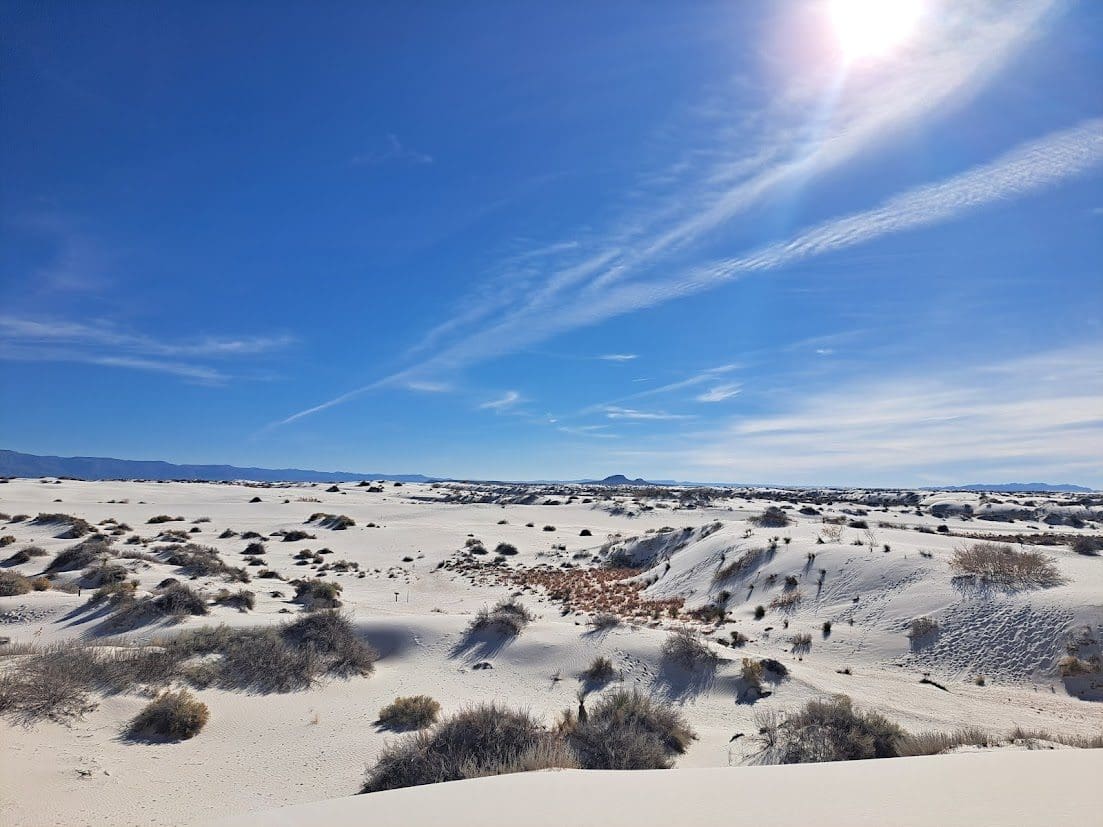
Getting to White Sands National Park
Once you experience White Sands, you’ll be hooked. I have such a love for this peaceful and serene park that almost all of my road trips east start and end with a visit to this park. There’s enough history, geology, and natural beauty to be found here that you can be entertained for days. However, the shorter trails and the fact that Dunes Drive is only 16 miles long make this a perfect detour stop for anyone road tripping through southern New Mexico, the Southwest, or a longer journey on I-10.
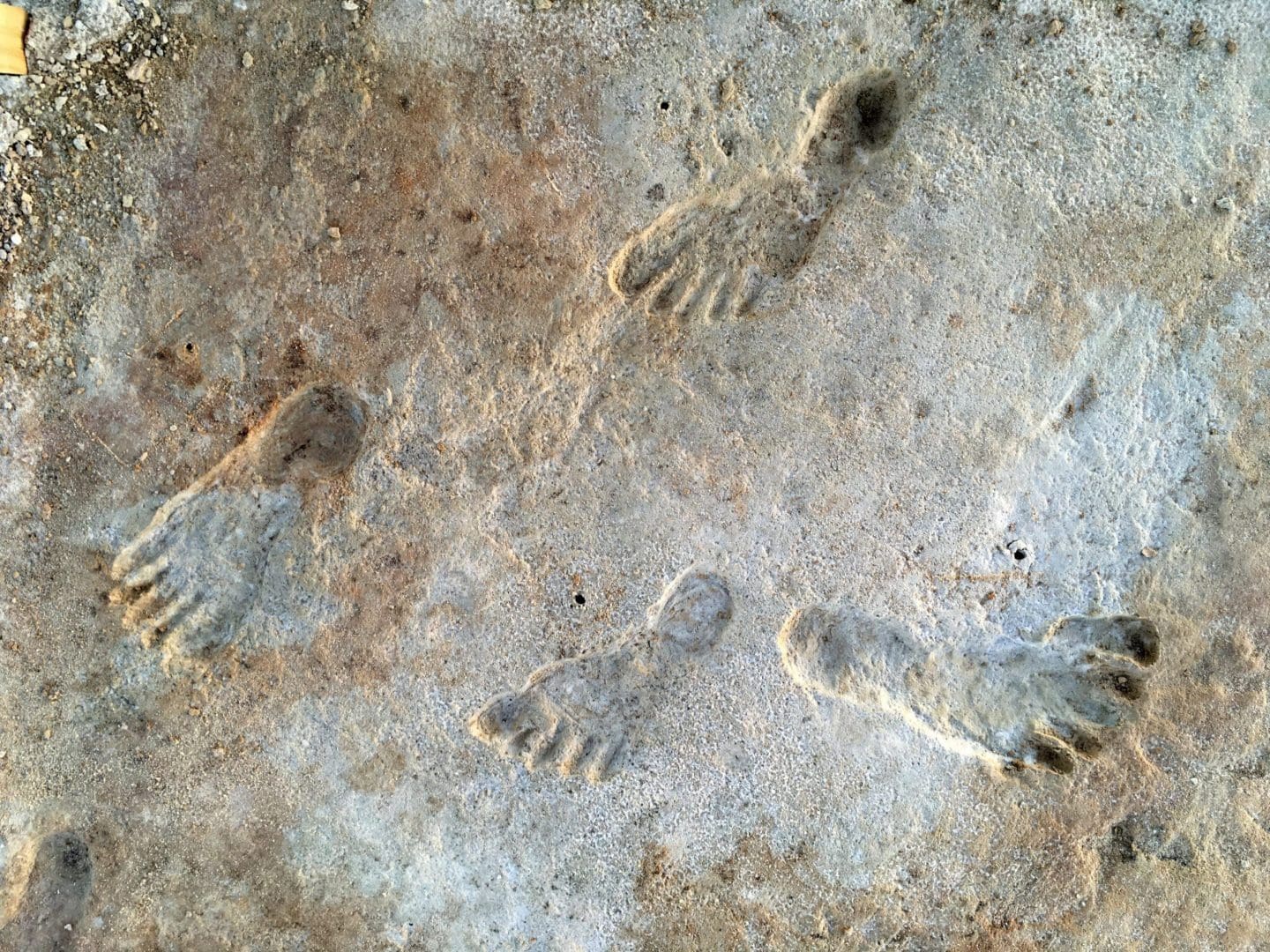
Signs of the Past Found at White Sands National Park
White Sands has been a national monument since 1933, and became a national park in 2019.
The park sits in the Tularosa Basin, which in ancient times did not hold the gypsum sand dunes it’s known for today. Instead there was an abundance of water, foliage, and grasslands that supported Ice Age animals like mammoths and saber-tooth tigers. The hospitable environment and large game attracted the earliest human settlers to the area 21 to 23 thousand years ago. Footprints found at White Sands are the oldest archaeological evidence we have of humans in the Americas, thousands of years before they were previously thought, by many, to have arrived. While the footprints are not accessible to the public, you can view a gallery of images online or see an exhibit now at the visitor center for more information.
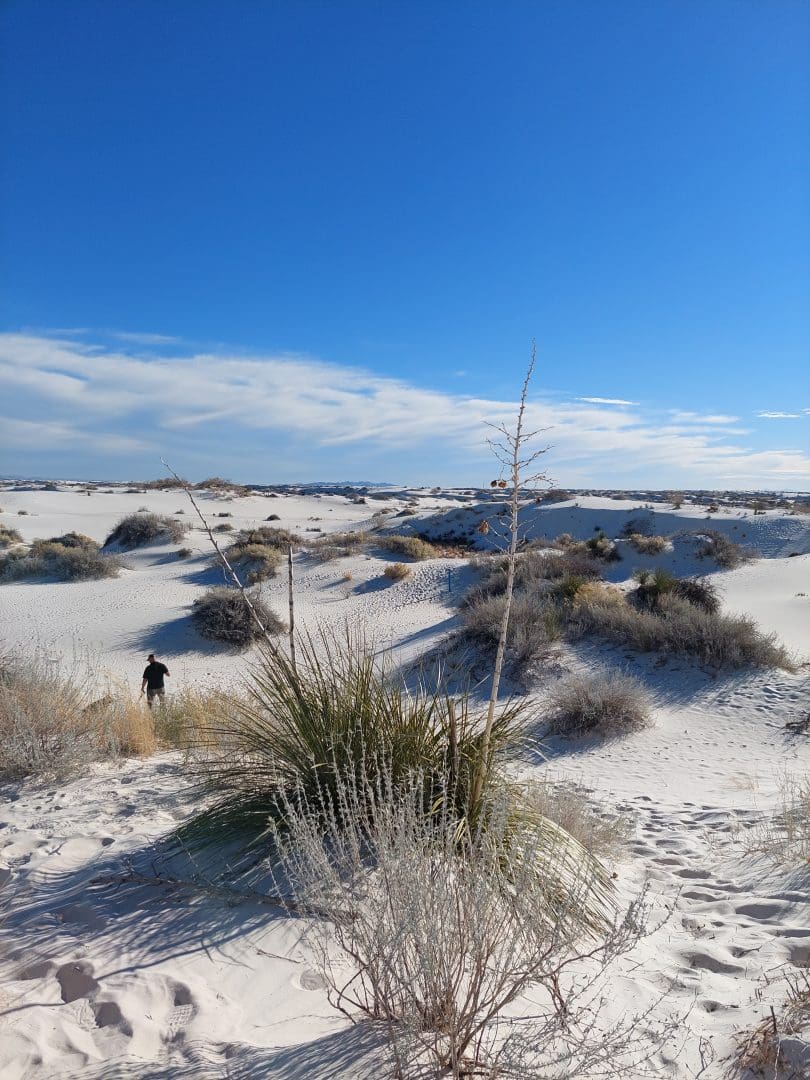
White Sands Travel Tips
-
- Carry lots of water, especially if you are not used to desert hiking. The park recommends a gallon of water per person every day you plan to be there.
- Feel the sand between your toes by hiking barefoot on the soft sand. Just check the sand temperature before committing to make sure it’s not too hot or too cold!
- Learn about the history and geology of the park at the visitor center, which is itself a historic building constructed by WPA workers.
- Walk the dunes under a full moon or listen to music under the stars by checking the calendar for events. I can only imagine how bright and beautiful the dunes look under a full moon!
- Check the open hours! Unlike other national parks, the park has literal gates that it shuts from sunset to 7 A.M. It is also closed for Christmas and Thanksgiving, and sometimes for missile tests nearby, so always double check the operating hours and sunset time when you plan to go.
- Check the calendar for free days! While the park is well worth the $25 per car fee, check the fee page for upcoming free entrance days at the national parks.
- Book your stay in nearby Las Cruces or Alamogordo or check out the White Sands National Park website for places to camp nearby if planning to stay awhile.
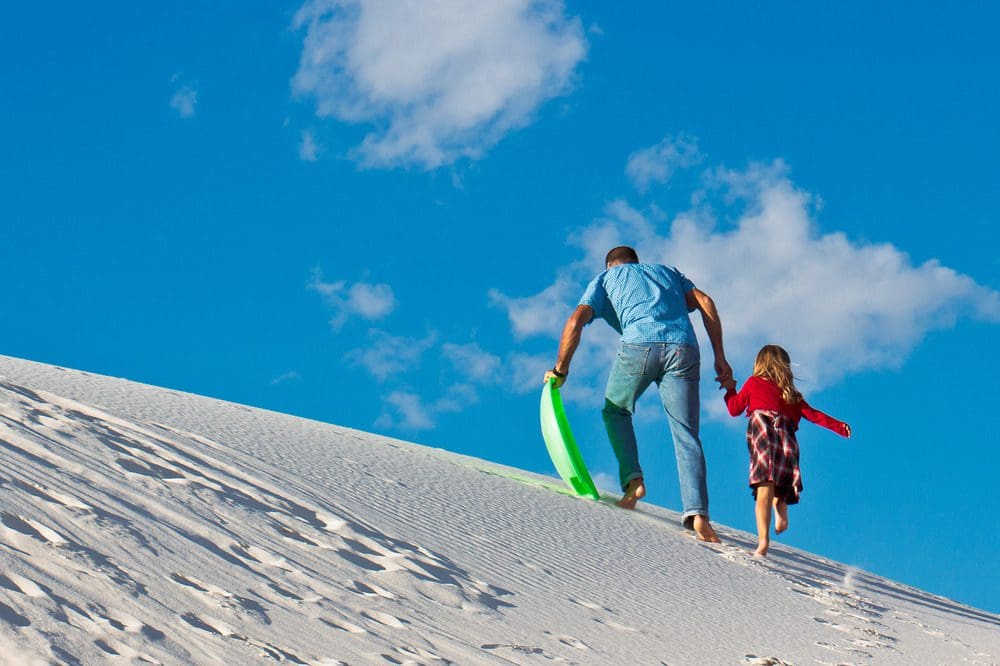
Must-Do’s at White Sands National Park
- The Dune Life Nature Trail is only a mile round trip, but take your time and feel free to wander around the sand dunes and just enjoy! Lots of people also like to sled on the sand here.
- The short and sweet Playa Trail. If you are lucky during monsoon season, you may see some desert tadpoles in a temporary pond! Just don’t let any pets drink the water, as it is way too salty and stagnant.
- Check out the visitor center for exhibits on the geology and history of the park. It’s also the only place in the park where you can find water.
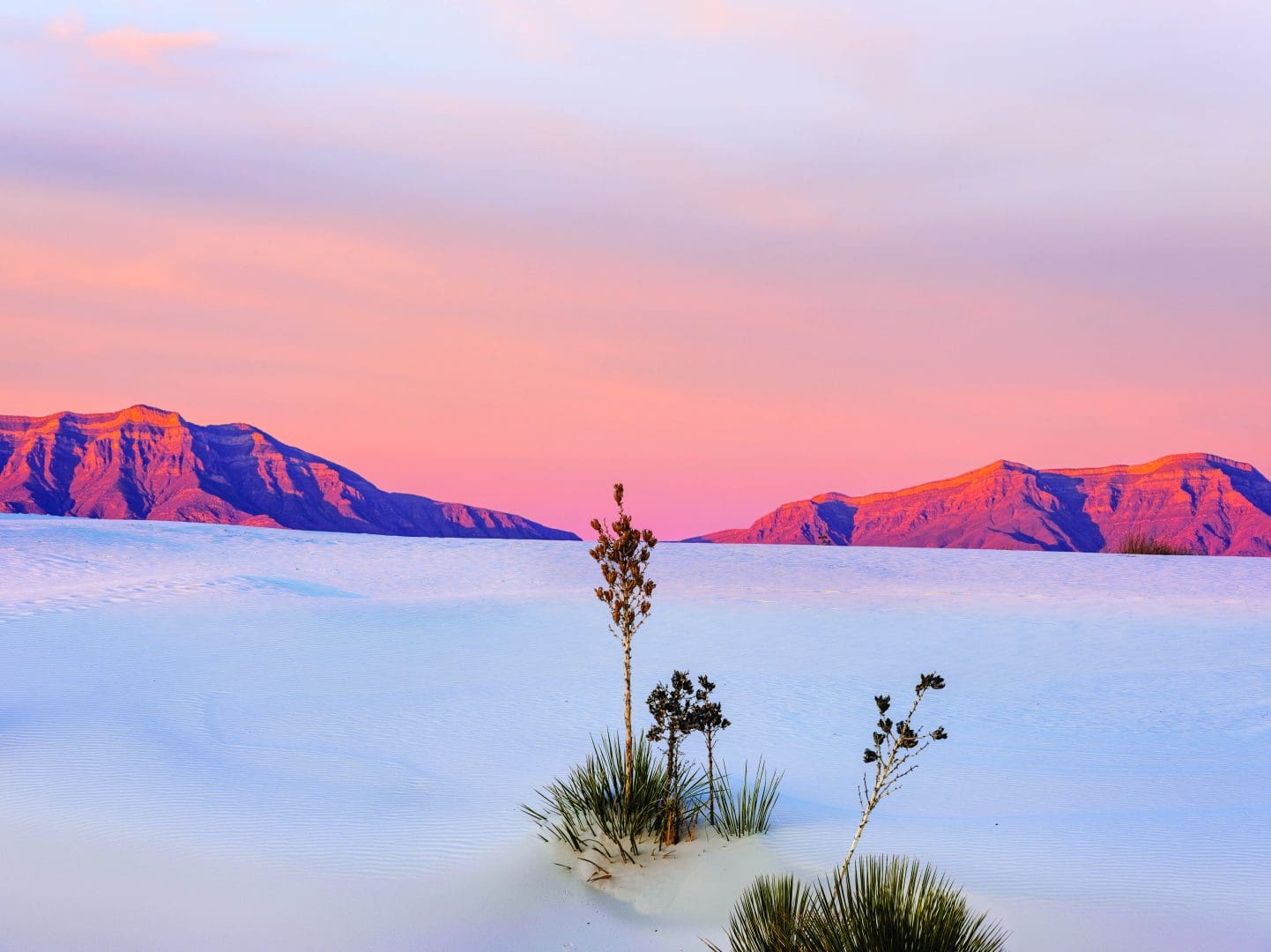
Want to show your love and support for these incredible lands?
Shop WNPA’s White Sands collection of apparel, books, collectibles, and more!
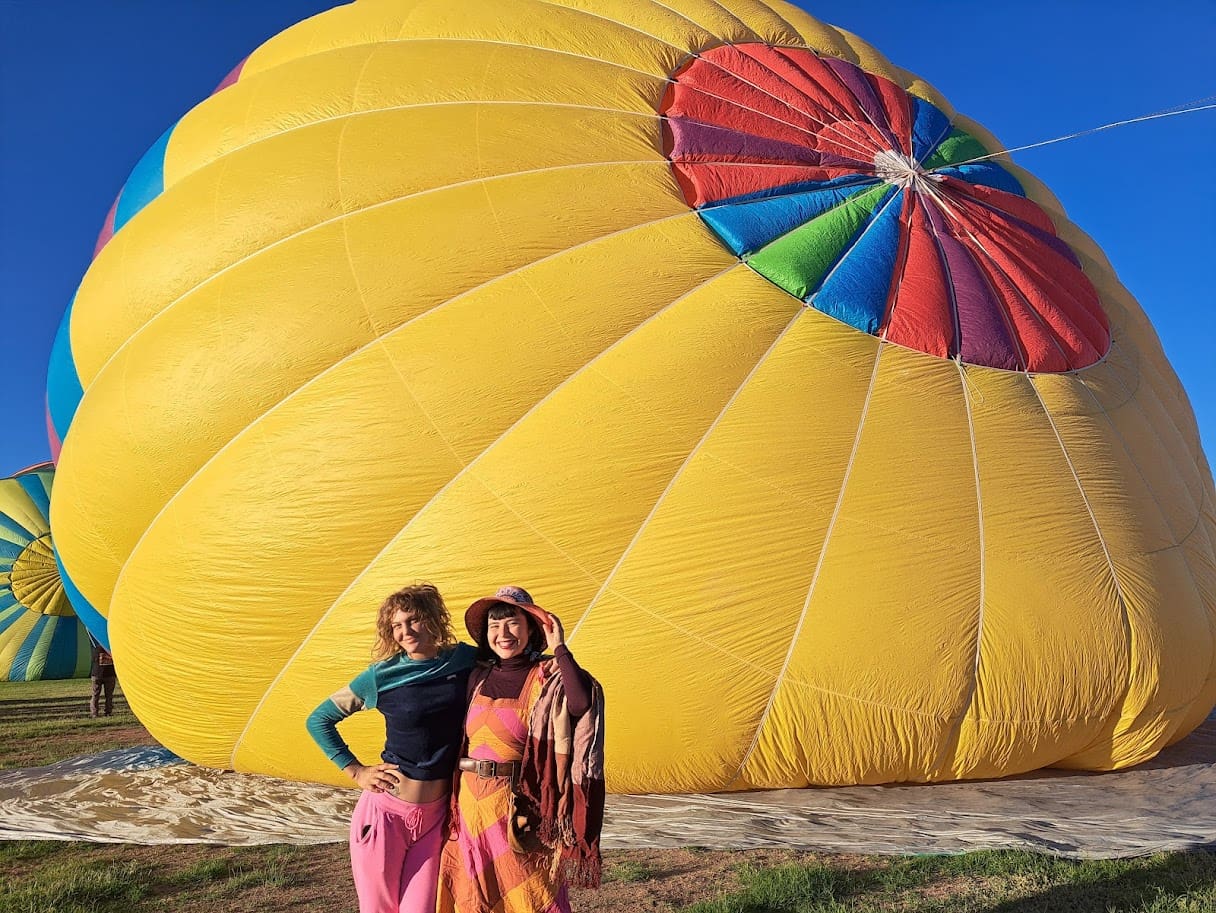
Alamogordo
Alamogordo is a unique little town just twenty minutes from White Sands National Park. The Tularosa Basin allows some tasty crops to grow in this area including apples, grapes, and pistachios. While you’re there, visit the world’s largest pistachio at Pistachio Land or visit Apple Boy at the Old Apple Barn and get some locally grown produce and treats! Alamogordo is also home to the White Sands Balloon Invitational, a free annual balloon festival where you can see hot air balloons takeoff against the backdrop of the gorgeous gypsum sands.
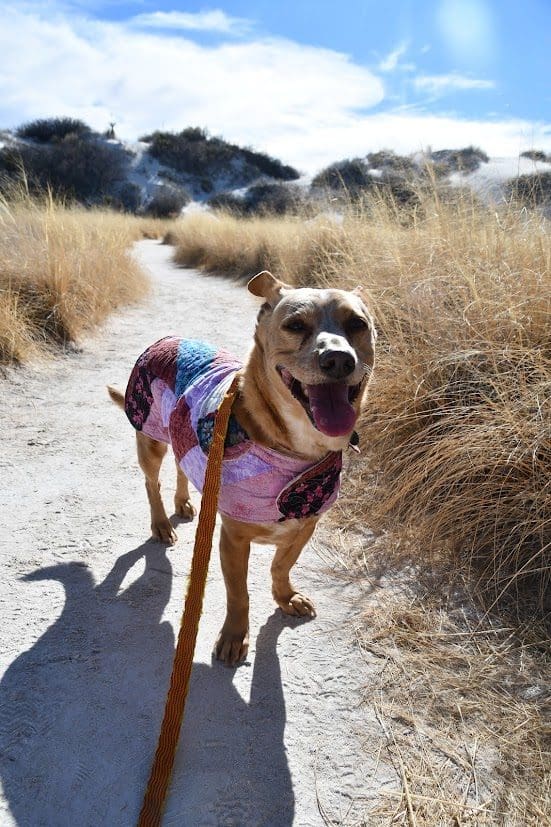
White Sands’ Pet Policy : A Very Dog-Friendly Park
White Sands was my dog’s favorite national park, hands (or should I say paws?) down. He loved nothing more than running around the sand, and the peaceful quiet of White Sands makes it a perfect place for people to enjoy as well. White Sands checks all those boxes easily, and the soft gypsum sand is super easy on dog pads for most of the year. There are also so many plants and scents for doggies to smell on the dunes!
Many national parks only allow dogs in developed areas, such as roadways or parking lots, but may not allow dogs on trails. At White Sands, pets are free to come explore with you anywhere as long as they are on a leash no longer than six feet. That means they can join you to play in the sand dunes! Just remember to check the sand temperature during hot summer days with your hand to make sure your furry baby won’t hurt their feet. The best time to go during summer for pets is early in the morning or close to sunset.
The park only restricts pets from entering the visitor center and then understandably doesn’t allow them to be left in cars for the safety of your dog. If you do want to visit the visitor center but have a four-legged family member in tow, try tag teaming the exhibits and gift shop with other members of your party. Of course, service dogs are allowed into all the facilities.
White Sands also offers a special B.A.R.K. Ranger program so you can learn how to have fun with your pet outdoors while practicing good trail stewardship. Visit the visitor center and speak with a ranger for additional details, and to earn a special certificate.

Life Renews Itself at White Sands National Park
While I usually go to White Sands National Park as a stop along on road trips, in September of 2022 I traveled specifically to the park to memorialize my dog, Theo, in a place where we had both shared so much joy. That year there had been strong monsoon storms in Tucson, but it was still an unexpected surprise to see an actual pond at the park’s Playa. When I went to investigate the mucky water, I was even more excited to see a multitude of large tadpoles swimming. These large tadpoles, members of some of White Sands National Park’s seven frog and toad species, were clearly racing to maturity to complete their metamorphosis into their adult form before their watery home disappeared.
As a kid I used to catch tadpoles in a pond outside my house and watch as they began to grow frog limbs, fascinated by the transformation. In that moment of personal grief, it was humbling and reassuring to witness new life sprout forth out of what previously had looked like a lifeless patch of dry, cracked sand.
The most enchanting thing about this land is how life exists and thrives in the most unexpected and impossible ways. Although we no longer have the giant sloths that we have footprint records of being hunted by humans for food, this land continues to recreate itself to sustain the creatures it has been host to throughout the ages. Each layer of history is simply woven into and supports the next chapter. That power of renewal is palpable on a visit to this magical land, and will keep you making detours to this jewel in the desert anytime you journey through the area again.
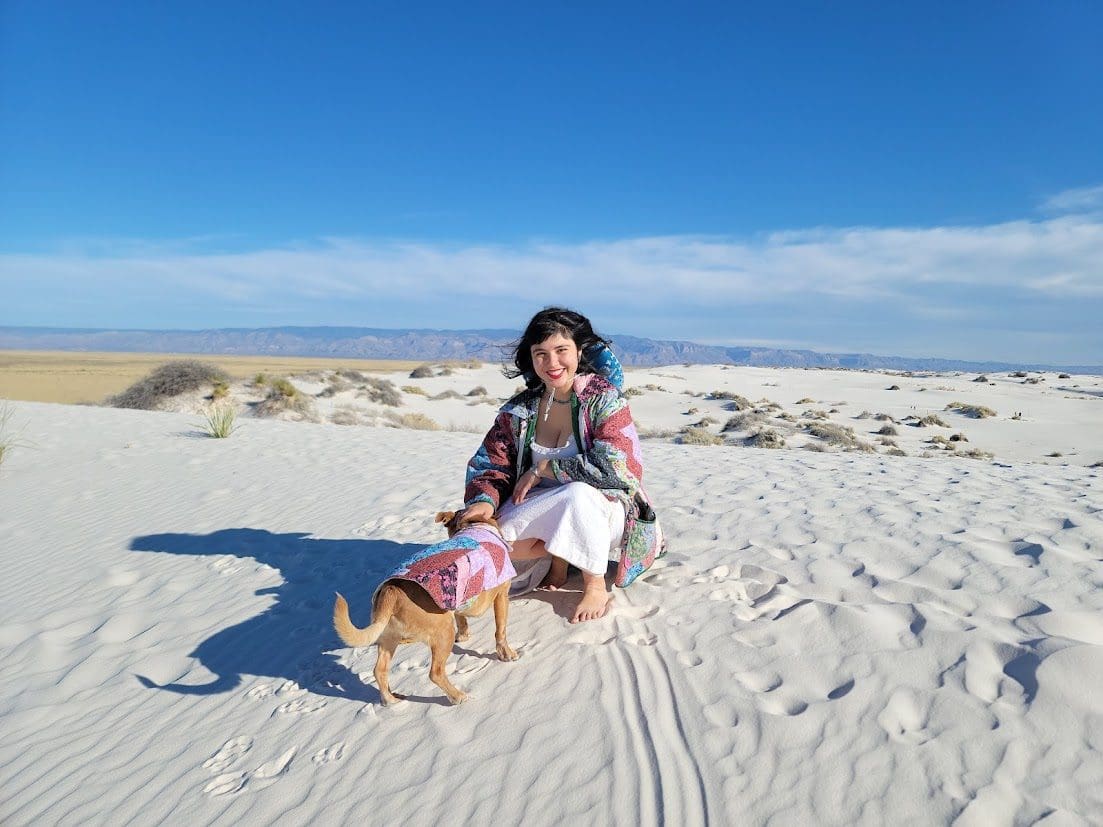
Michelle Ibarra is a former hesitant hiker turned avid national park goer. Growing up as a second generation immigrant and Cubana in Miami, Michelle writes to help others find the peace and joy of the national park experience that she discovered only after moving to Tucson, Arizona in 2019. She has visited 59 national parks, aims to visit all 63 before she turns 30, and writes avidly about inclusive park experiences.
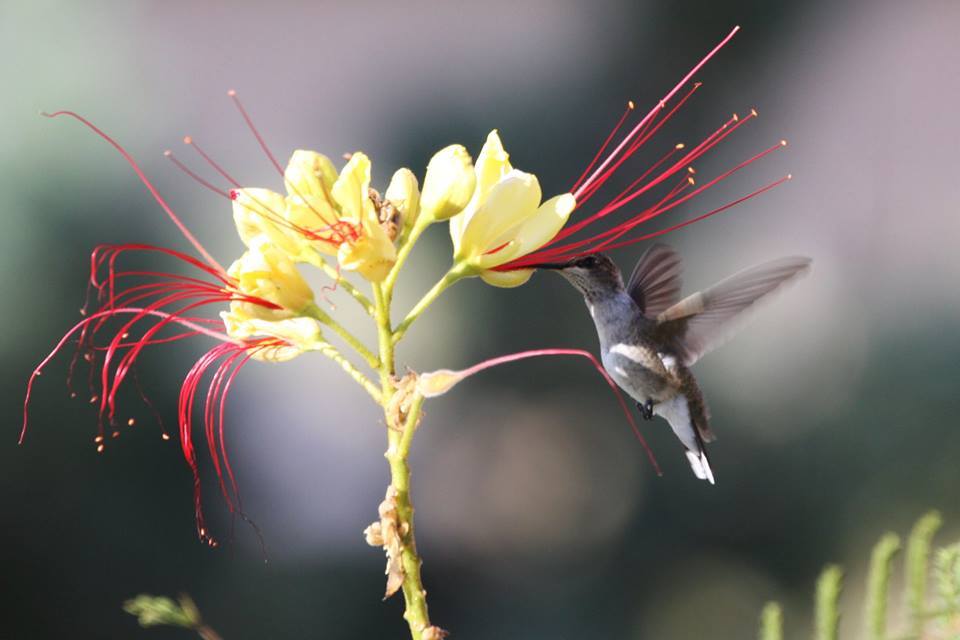
Want to help preserve these significant lands for generations? Your donation supports kids’ programs, research, Indigenous artists’ demonstrations, and more!



